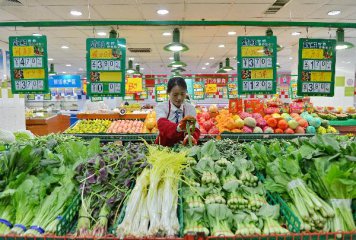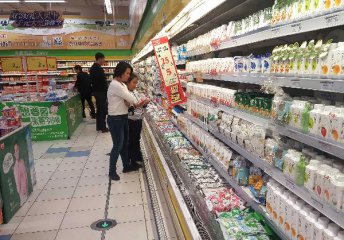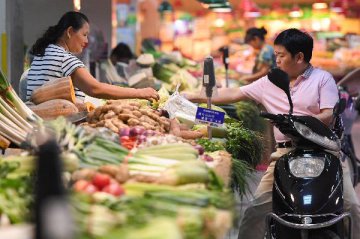
China's consumer prices continued to rise in November, buoyed by a jump in food and fuel costs, while factory prices beat market expectations to rise to a five-year high, fanning inflation concerns.
The producer price index (PPI) rose 3.3 percent last month from a year earlier, a level not seen since late 2011, the National Bureau of Statistics (NBS) said Friday.
On a monthly basis, producer prices rose 1.5 percent. Prices for materials from steel and copper to glass and cement rose due to a construction boom led by higher government spending and a housing market rally.
The country's efforts to reduce redundant capacity in industry and mining have reduced supplies and buoyed prices. Higher inflation is both an indicator and driver of improvement in conditions in China's corporate sector. Higher producer prices mean higher profits, easing corporate debt. Industrial profits increased in October, rising 9.8 percent from a year earlier.
China's consumer inflation rate rose to 2.3 percent year-on-year last month, the highest since April. On a month-on-month basis, the Consumer Price Index (CPI) rose 0.1 percent in November.
NBS statistician Sheng Guoqing attributed the growth of inflation to higher food and fuel prices.
Vegetable prices jumped 5.5 percent month on month, as a cold weather front disrupted supplies, contributing 0.14 percentage points to CPI growth. On a year-on-year basis, vegetable prices soared 15.8 percent, compared with a 13 percent increase in October.
Prices of petrol, diesel, gas, coal, water and electricity also increased last month, again due to the cold weather.
Analysts voiced concerns that rising consumer prices are eroding the value of household savings. The real savings rate for households was back in negative territory for almost all of 2016. Real income growth is on a declining trend.
"Lower spending power for households will be a drag on the long-term goal of raising the profile of consumption as a driver of growth," said Tom Orlik, Bloomberg chief Asia economist.
Consumer prices will continue to rise moderately in the next two months, pushed up by rising food prices and the upcoming New Year's Day and Spring Festival holidays, analysts said.
Cao Heping, economics professor at Peking University, forecast the CPI to remain around 2.3 percent over the next two months if there is no severe weather.
He expects China's annual CPI to hit 2 percent in 2016, well below the official target around 3 percent.
Analysts believe that strong month-on-month PPI growth is unsustainable, but annual PPI growth is likely to rise due to the low base in late 2015 and early 2016, and may reach a high of over 5 percent in the first quarter of 2017.
The upbeat producer and consumer inflation data reinforce the view that the central bank is in no rush to loosen monetary policy in the near future.
"Monetary policy will remain prudent, and more emphasis will be placed on the control of asset bubbles and financial risks," said Liu Liu, economist of the research department of China International Capital Corp.























Latest comments